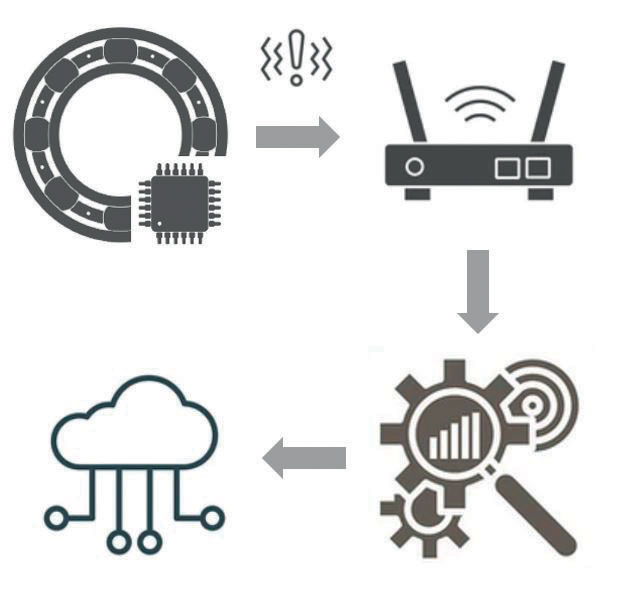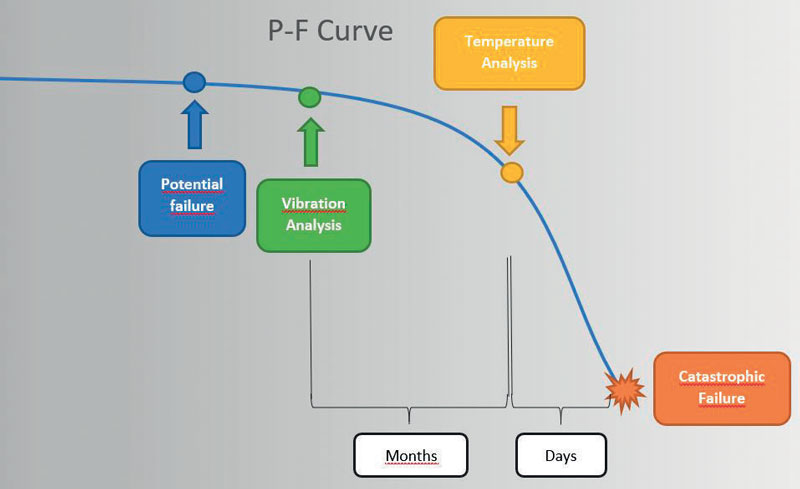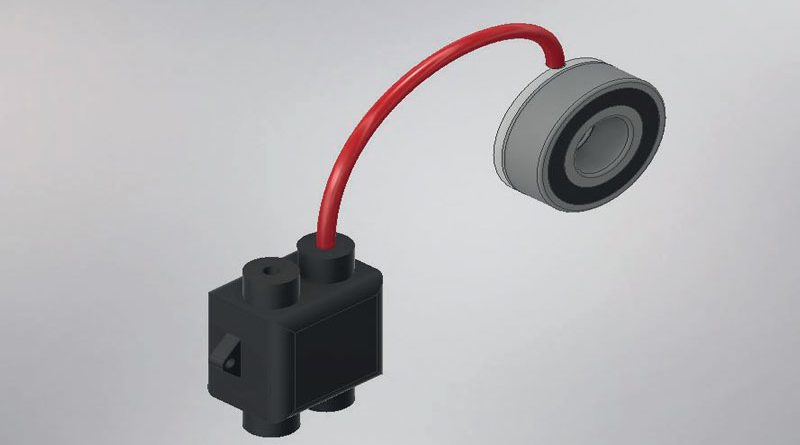Predictive maintenance relies on IIoT bearings
The smart bearing designed by MBI allows a continuous monitoring of bearing performance, where critical parameters on bearing are under control for a predictive maintenance of the system.
Bearings are widely used on different applications as industrial, heavy duty, home appliance, automotive and energy production. Lifetime is usually calculated during the initial product design, but unexpected events or wrong working conditions (contamination, environment, assembly misalignments) cause lifetime reduction and consequentially unpredictable failure of the system. The entire assembly is usually compromised when a bearing has a failure, causing high costs for repairing time and for components. The smart bearing designed by MBI allows bearing performance to be continuously monitored, keeping critical parameters under control and enabling the predictive maintenance of the system.

The role of vibration analysis in preventing downtimes
A P-F curve is a graph that shows the health of equipment over time to identify the interval between potential failure and functional failure. When a trigger event occurs bearing degradation starts, the slope of the P-F curve is increased, reducing the real lifetime of the asset. Sensor positioned on bearings allows to collect raw data for vibration analysis, predicting asset failure by months. Temperature monitoring is an additional last alarm to stop the asset before the complete failure, so costs are reduced compared with a functional failure. Smart bearing is integrated with a tri-axial accelerometer to measure the system vibrational level. Raw data represent the sum of the acceleration of every single component of the system, so a post-process algorithm is necessary to individuate the precise root cause of the fault. In fact, every component has his own vibrational profile correlated to geometrical properties and working conditions. A spectrum graph is obtained by Fourier transform algorithm, and this allows to analyse vibration amplitudes at various component frequencies: maintenance personnel are then able to plan and assess whether it is cost-efficient to mitigate the causes of failure (misalignment, excessive clearance, unbalancing, bearing fault, gear mesh, belt fault, fan/impeller fault, etc). A normal user can monitor the vibrational trend of envelope acceleration (gE) and set threshold limit, additionally stop due temperature rise could be set too.

Bearings with bult-in sensor are becoming more and more compact
MEMS sensor developments in the last few years allows to achieve performance useful for predictive maintenance. The sensor is integrated on a PCB glued on the bearing, which keep its datasheet performance. This new design modifies only the bearing width of bearing for 3-4 mm compared with catalogue dimension. Electronic board for data processing and communication is introduced outside the bearing. The monitoring system consists of a probe placed on the bearing and an electronic board (HUB) for data collection and transmission. This high-performance board allows correct sampling data rate to ensure a correct signal reading. The processed data can be analysed on PC software, then stored on internal memory or sent via Ethernet/WI-FI to Cloud data system for data post-processing of one or more sensors placed in different sites.

